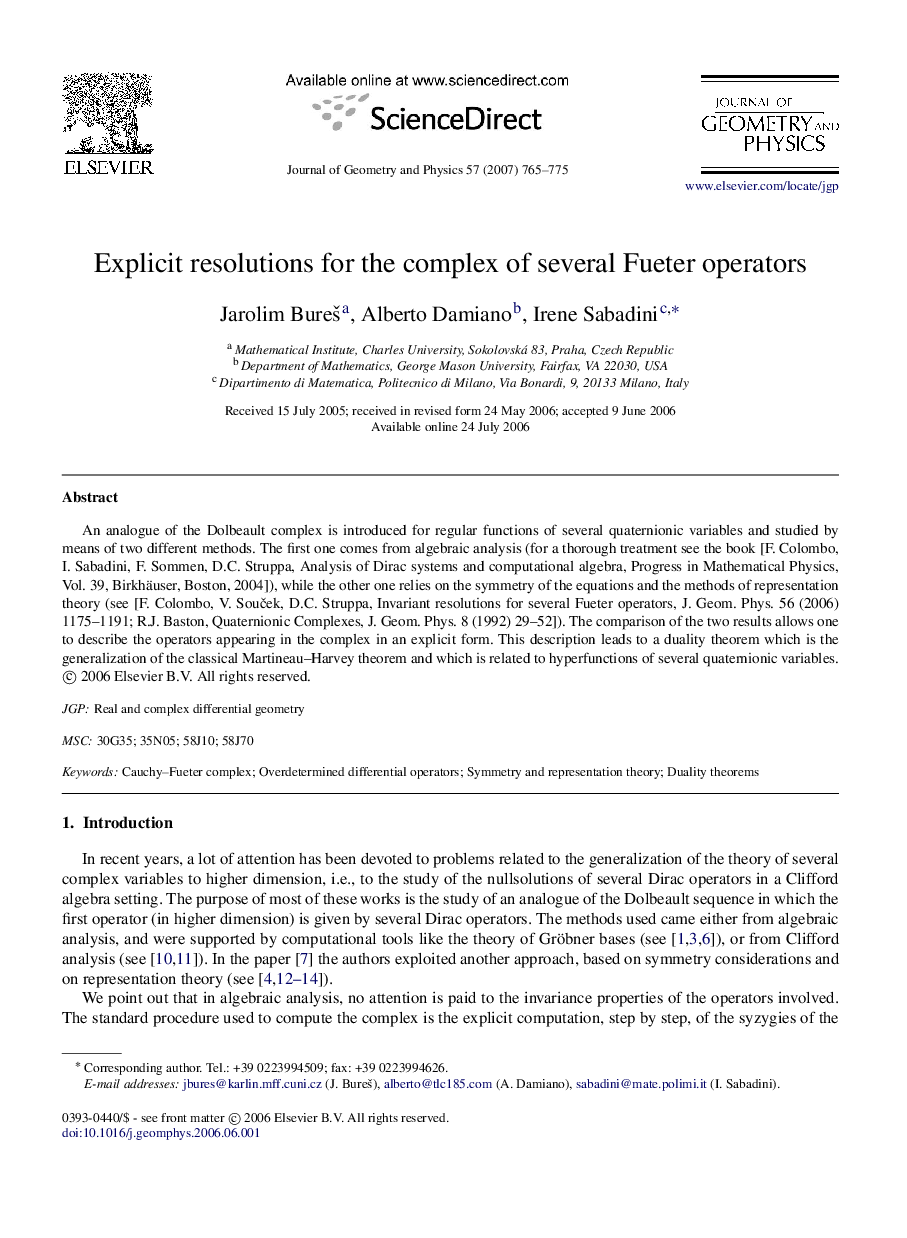| Article ID | Journal | Published Year | Pages | File Type |
|---|---|---|---|---|
| 1894587 | Journal of Geometry and Physics | 2007 | 11 Pages |
An analogue of the Dolbeault complex is introduced for regular functions of several quaternionic variables and studied by means of two different methods. The first one comes from algebraic analysis (for a thorough treatment see the book [F. Colombo, I. Sabadini, F. Sommen, D.C. Struppa, Analysis of Dirac systems and computational algebra, Progress in Mathematical Physics, Vol. 39, Birkhäuser, Boston, 2004]), while the other one relies on the symmetry of the equations and the methods of representation theory (see [F. Colombo, V. Souček, D.C. Struppa, Invariant resolutions for several Fueter operators, J. Geom. Phys. 56 (2006) 1175–1191; R.J. Baston, Quaternionic Complexes, J. Geom. Phys. 8 (1992) 29–52]). The comparison of the two results allows one to describe the operators appearing in the complex in an explicit form. This description leads to a duality theorem which is the generalization of the classical Martineau–Harvey theorem and which is related to hyperfunctions of several quaternionic variables.
